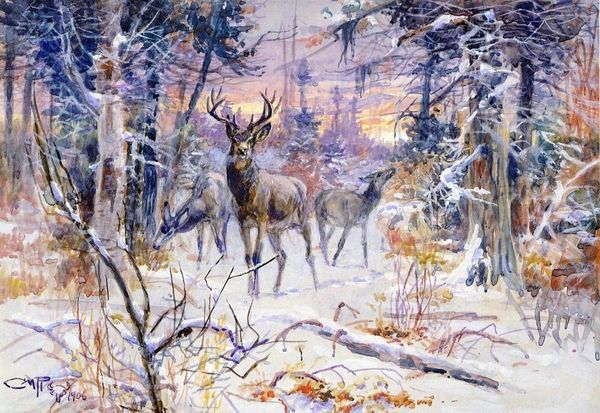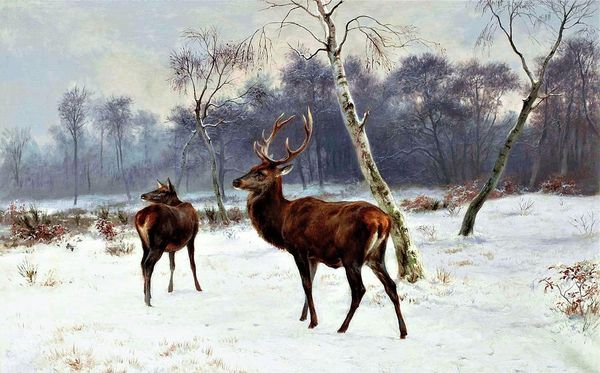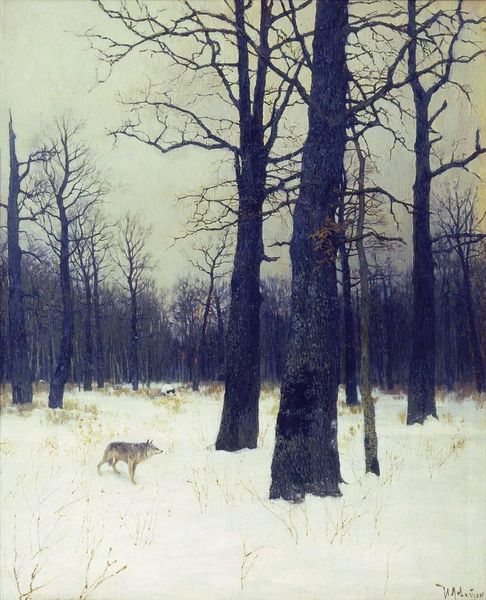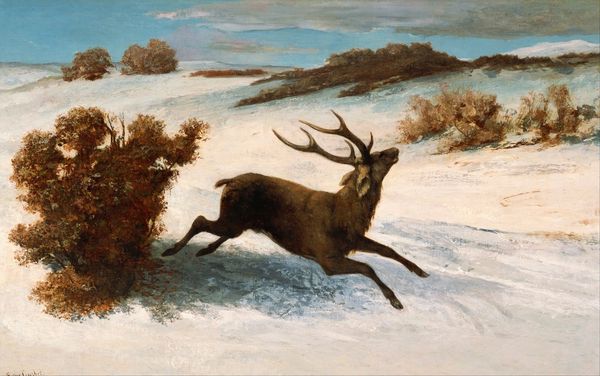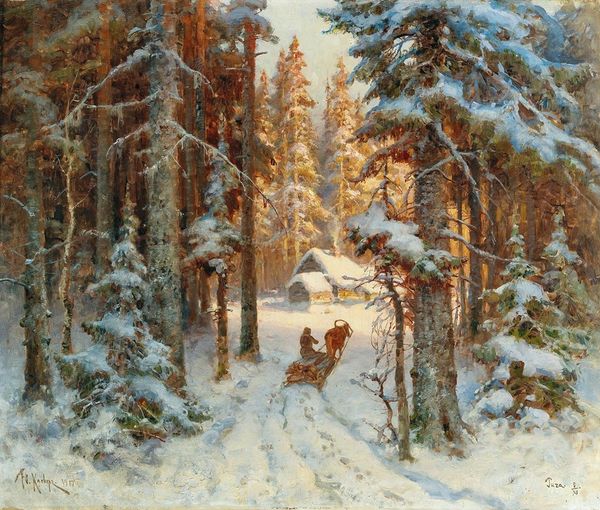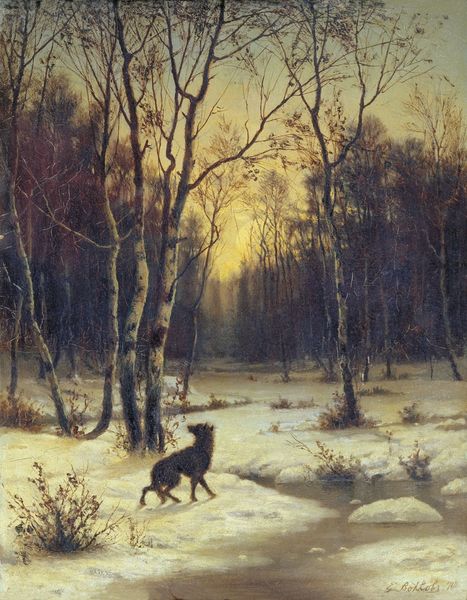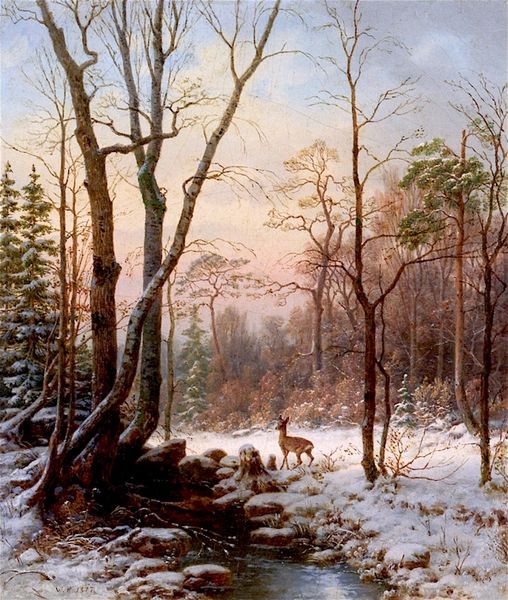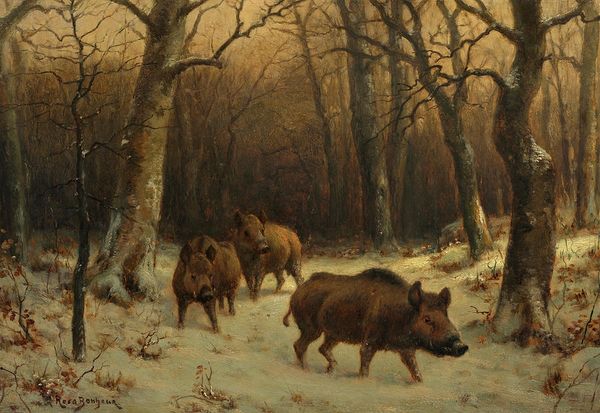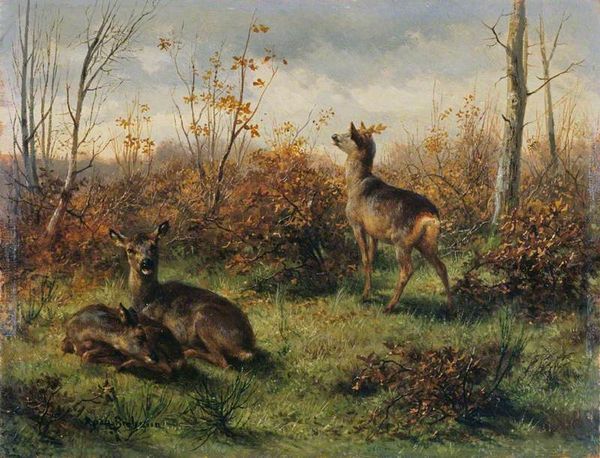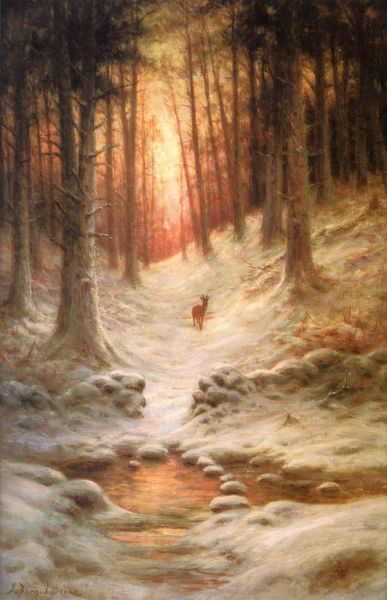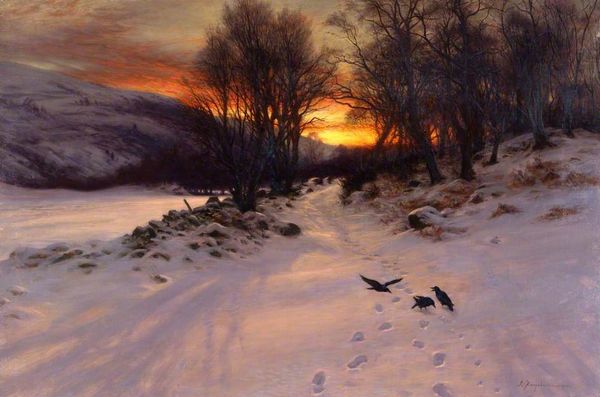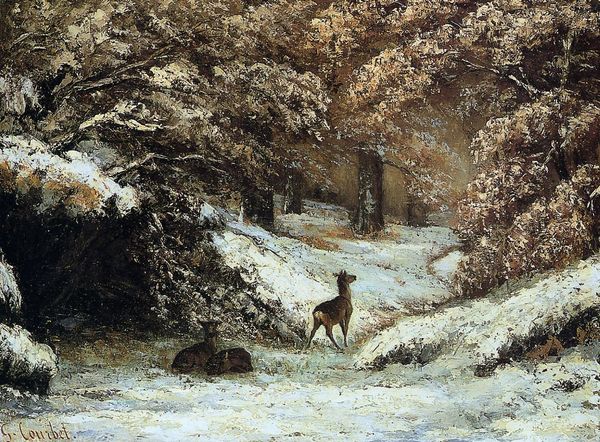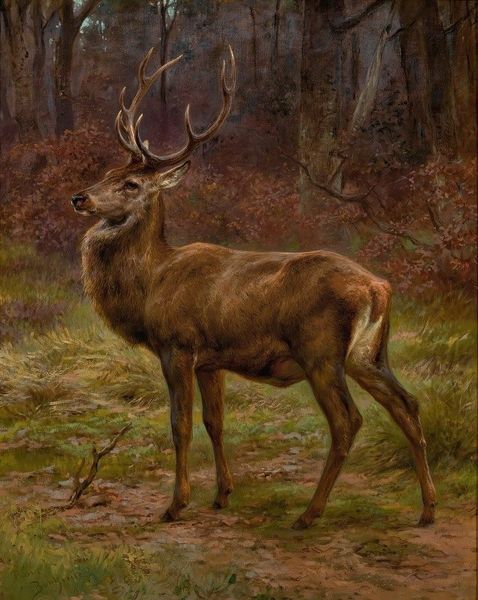
Copyright: Public domain
Editor: Here we have Richard Friese’s 1895 oil painting, "Moose in a Winter Landscape". The composition and rendering are captivating. What compositional elements strike you most when looking at it? Curator: The distribution of the elements across the visual field and the treatment of recession are most striking. Friese employs a distinct foreground, middle ground, and background, yet note how the artist uses the snow-covered slope as a device to integrate them. The repetition of diagonals in the tree branches creates visual coherence but also leads the viewer’s eye through the picture plane, a brilliant integration of depth and surface. Editor: I see what you mean about how the artist uses the composition to subtly guide your eyes! And what about the paint application? Does that factor into your understanding? Curator: Most assuredly. Look closely at the varied brushstrokes used to depict the snow. Observe how the light catches the textured surface, giving a tactile quality to the scene. This impasto technique heightens the sense of depth and realism, despite the flattening effect of the two-dimensional surface. The artist clearly prioritized how form and content cohere. Editor: That makes perfect sense. Seeing it described in terms of structure and brushwork clarifies the relationship between Friese’s style and technique. Curator: Indeed, Friese masterfully used visual syntax to elicit a particular experience, that being the interplay of depth and surface and form and content as part of the unified aesthetic whole. Editor: I’ll never look at winter landscapes the same way again! Curator: Likewise, the application of a Formalist lens enables one to explore beyond a mere appreciation of scenery, and further engage the mechanics of image-making.
Comments
No comments
Be the first to comment and join the conversation on the ultimate creative platform.
